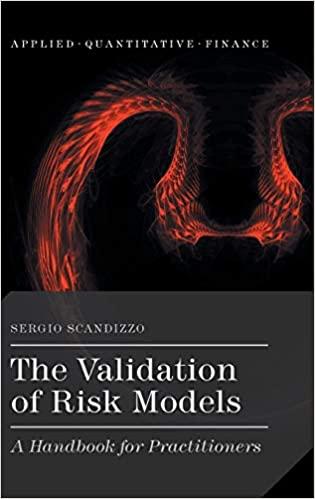Question
7. PLEASE ANSWER THIS CORRECTLY ASAP IT WOULD MEAN A LOT Last year Carson Industries issued a 10-year, 13% semiannual coupon bond at its par
7. PLEASE ANSWER THIS CORRECTLY ASAP IT WOULD MEAN A LOT
Last year Carson Industries issued a 10-year, 13% semiannual coupon bond at its par value of $1,000. Currently, the bond can be called in 6 years at a price of $1,065 and it sells for $1,230. A. What are the bond's nominal yield to maturity and its nominal yield to call? Do not round intermediate calculations. Round your answers to two decimal places. YTM: % YTC: %
Would an investor be more likely to earn the YTM or the YTC?
-Select-Since the YTM is above the YTC, the bond is likely to be called.Since the YTC is above the YTM, the bond is likely to be called.Since the YTM is above the YTC, the bond is not likely to be called.Since the YTC is above the YTM, the bond is not likely to be called.Since the coupon rate on the bond has declined, the bond is not likely to be called.
B. What is the current yield? (Hint: Refer to Footnote 6 for the definition of the current yield and to Table 7.1) Round your answer to two decimal places.
 %
%
Is this yield affected by whether the bond is likely to be called?
- If the bond is called, the capital gains yield will remain the same but the current yield will be different.
- If the bond is called, the current yield and the capital gains yield will both be different.
- If the bond is called, the current yield and the capital gains yield will remain the same but the coupon rate will be different.
- If the bond is called, the current yield will remain the same but the capital gains yield will be different.
- If the bond is called, the current yield and the capital gains yield will remain the same.
C. What is the expected capital gains (or loss) yield for the coming year? Use amounts calculated in above requirements for calculation, if required. Negative value should be indicated by a minus sign. Round your answer to two decimal places.
Is this yield dependent on whether the bond is expected to be called?
- The expected capital gains (or loss) yield for the coming year does not depend on whether or not the bond is expected to be called.
- If the bond is expected to be called, the appropriate expected total return is the YTM.
- If the bond is not expected to be called, the appropriate expected total return is the YTC.
- If the bond is expected to be called, the appropriate expected total return will not change.
- The expected capital gains (or loss) yield for the coming year depends on whether or not the bond is expected to be called.
TABLE 7.1 Calculation of Current Yields, Capital Gains Yields, and Total Returns for 5%,8%, and 11% Coupon Bonds When the Market Rate Remains Constant at 8% Notes: - Using a financial calculator, the price of each bond is calculated by entering the data for N, I/YR, PMT, and FV, then solving for PV = the bond's value. ' The expected current yield is calculated as the annual interest divided by the price of the bond. "The expected capital gains yield is calculated as the difference between the end-of-year bond price and the beginning-of-year bond price divided by the beginning-of-year bond price. "The expected total return is the sum of the expected current yield and the expected capital gains yield
Step by Step Solution
There are 3 Steps involved in it
Step: 1

Get Instant Access to Expert-Tailored Solutions
See step-by-step solutions with expert insights and AI powered tools for academic success
Step: 2

Step: 3

Ace Your Homework with AI
Get the answers you need in no time with our AI-driven, step-by-step assistance
Get Started


